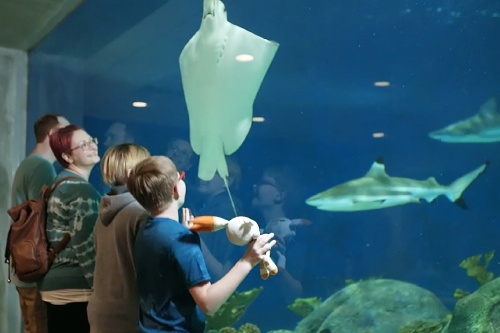What does accessibility mean to you?
Close your eyes and think of the word “accessibility.”
What image did you see?
Chances are, you saw a ramp.

A vitally crucial physical accommodation that has been synonymous with accessibility for decades. At least, that’s what it was for me. Until I met a father and a son who shifted my perspective. I was working at an aquarium at the time, riding home on the train in my work T-shirt. The father noticed the logo and we started chatting about sharks. I love conversations like this and loved it even more when his son was so excited by the topic he started jumping up and down. His excitement got me excited. I asked if he liked to visit the aquarium. He never spoke, but his dad quickly did and said, “Oh no, we don’t go, he has autism and it would be too much.”
The two got off the train and I spend the rest of the commute sad, curious, and confused. What made it so hard to go to the aquarium, a place they clearly wanted to visit? And where else weren’t they going? I realized that accessibility is a huge word that means many, many things to many different people. Both of my uncles had muscular dystrophy. To me, access was a venue with a ramp. But the boy on the train did not need a ramp, he needed something completely different to feel like he could access the aquarium.
This was a lesson to me and an inspiration to reexamine the definition I hardwired in my mind. I now think of accessibility as a beautiful, giant umbrella term that means access for all. It means everyone gets to go. Accessibility could be dimmed lighting, a stuffed animal, a social story, automatic doors, trained staff, and yes, a ramp. It is the literal definition of something that helps you have access to visit, play, enjoy, and be included in the community.
Think of the word accessibility again. Has your image changed?
